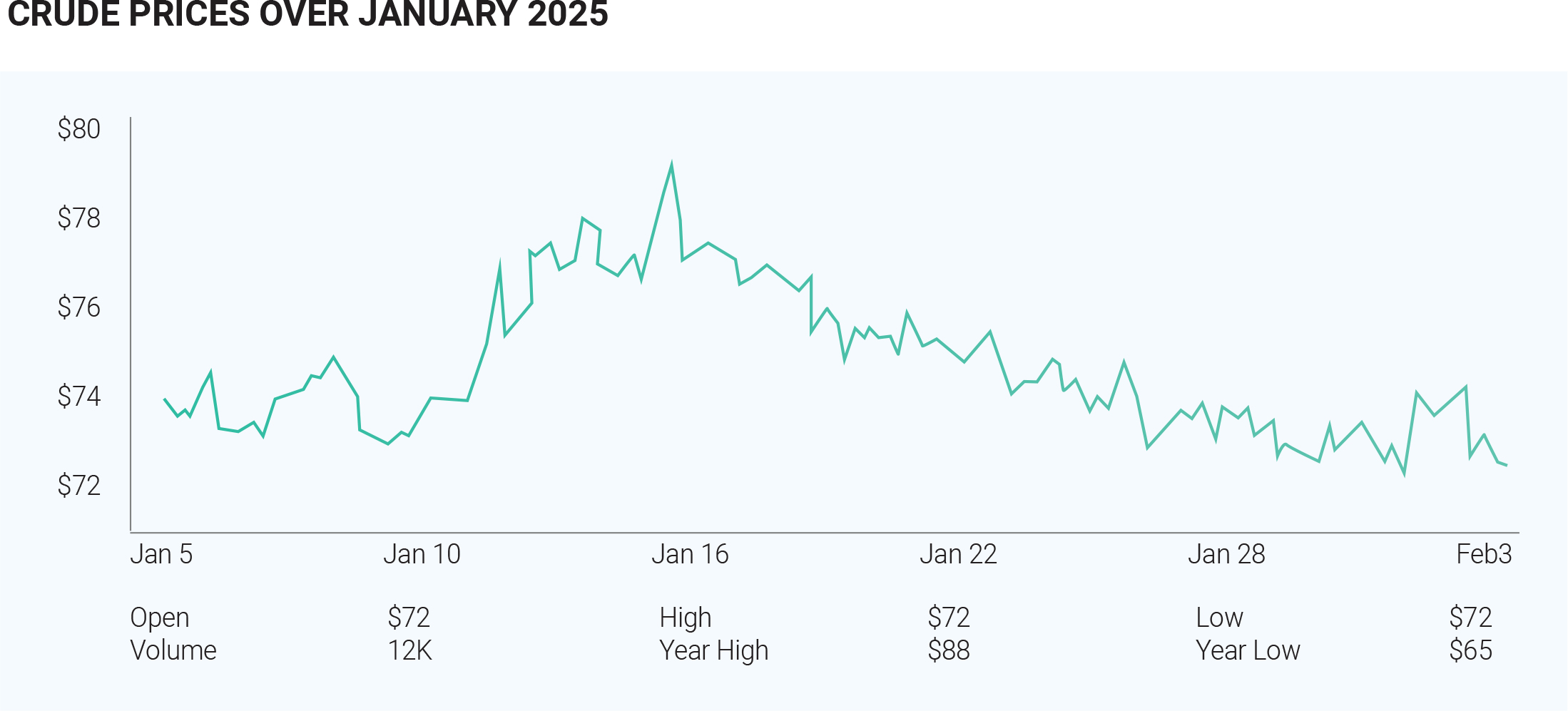Crude oil prices in India experienced a significant decline throughout January 2025 due to a combination of global and domestic influences. At the start of the month, Brent crude oil stood at approximately $80.79 per barrel on January 17. By January 24, prices had dipped to around $78.26 per barrel. Although the Indian basket price recovered slightly to $80.49 per barrel by January 28, the overall trend remained downward. One major factor contributing to the decline was the easing of geopolitical tensions. Market analysts observed growing optimism regarding a potential resolution to the Ukraine-Russia conflict, reducing the geopolitical risk premium that had previously supported higher oil prices. Additionally, expectations of increased oil production in the United States under the new administration further influenced market dynamics. Following President Donald Trump’s inauguration, there were strong signals of heightened U.S. energy output. Trump declared a national energy emergency and announced aggressive plans to maximize domestic oil and gas production. Markets reacted by pricing in an anticipated rise in U.S. crude supply, which added downward pressure on global oil prices. Weaker-than-expected demand growth, particularly from China, also played a role in softening prices. As one of the world’s largest consumers of crude oil, China’s reduced demand dampened market expectations. Simultaneously, rising production levels, especially from non-OPEC countries, further contributed to the anticipated global oil surplus. The situation was compounded by sanctions imposed by the U.S. on Russian oil trade, creating short-term disruptions. However, these sanctions prompted Indian refiners to explore alternative sources for crude, primarily from West Asia. Although this added complexity to the supply chain, it did not prevent the overall decline in crude prices. These developments collectively influenced the downward trajectory of crude oil prices, presenting potential economic benefits for India. Lower oil prices can help reduce import costs and alleviate inflationary pressures, providing some relief for the economy. Looking ahead, the situation remains fluid, with factors such as geopolitical developments, global inventory levels, and shifts in major economies' demand likely to shape future oil price trends. For now, India's energy sector may capitalize on reduced costs while navigating a complex and evolving global energy landscape.


